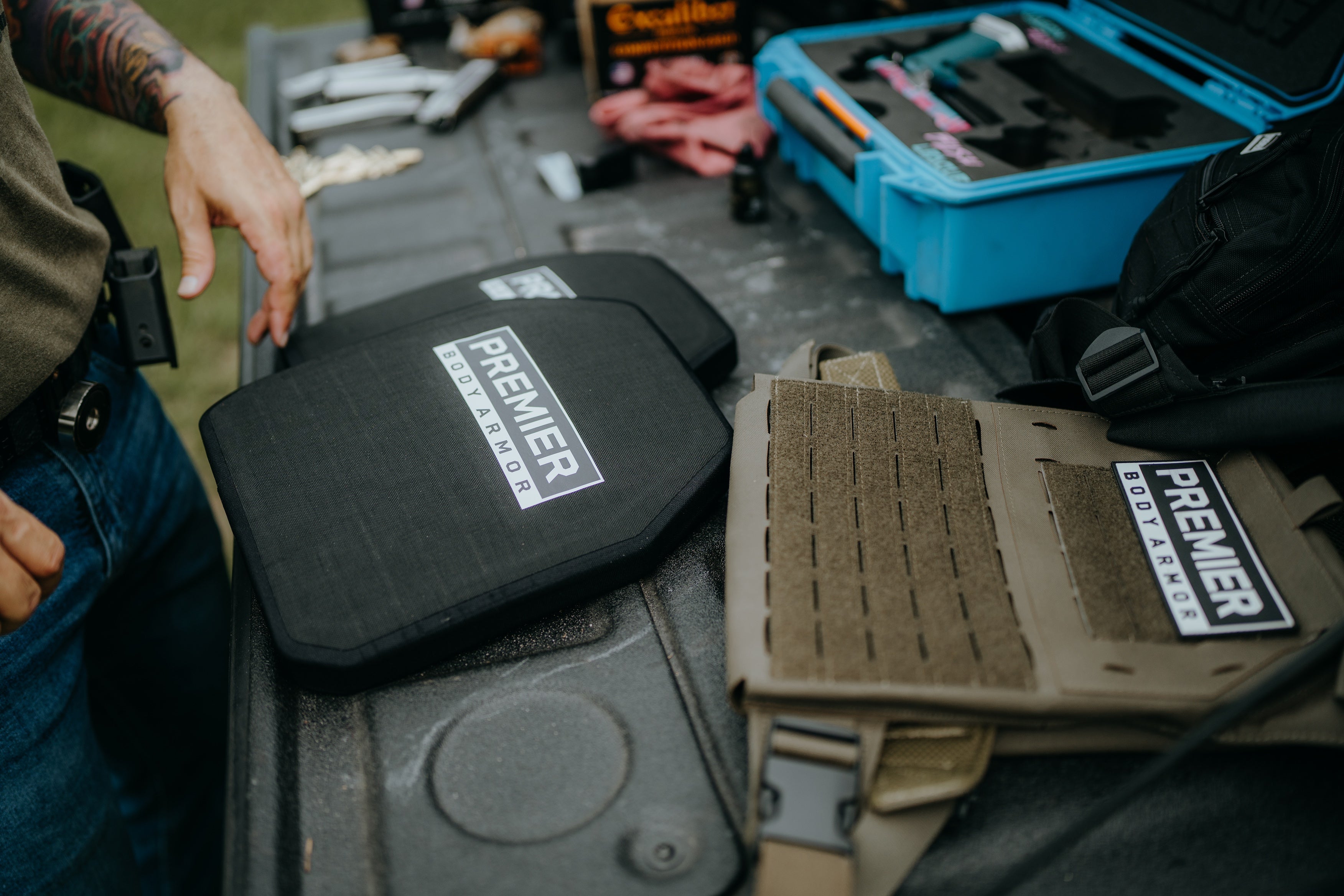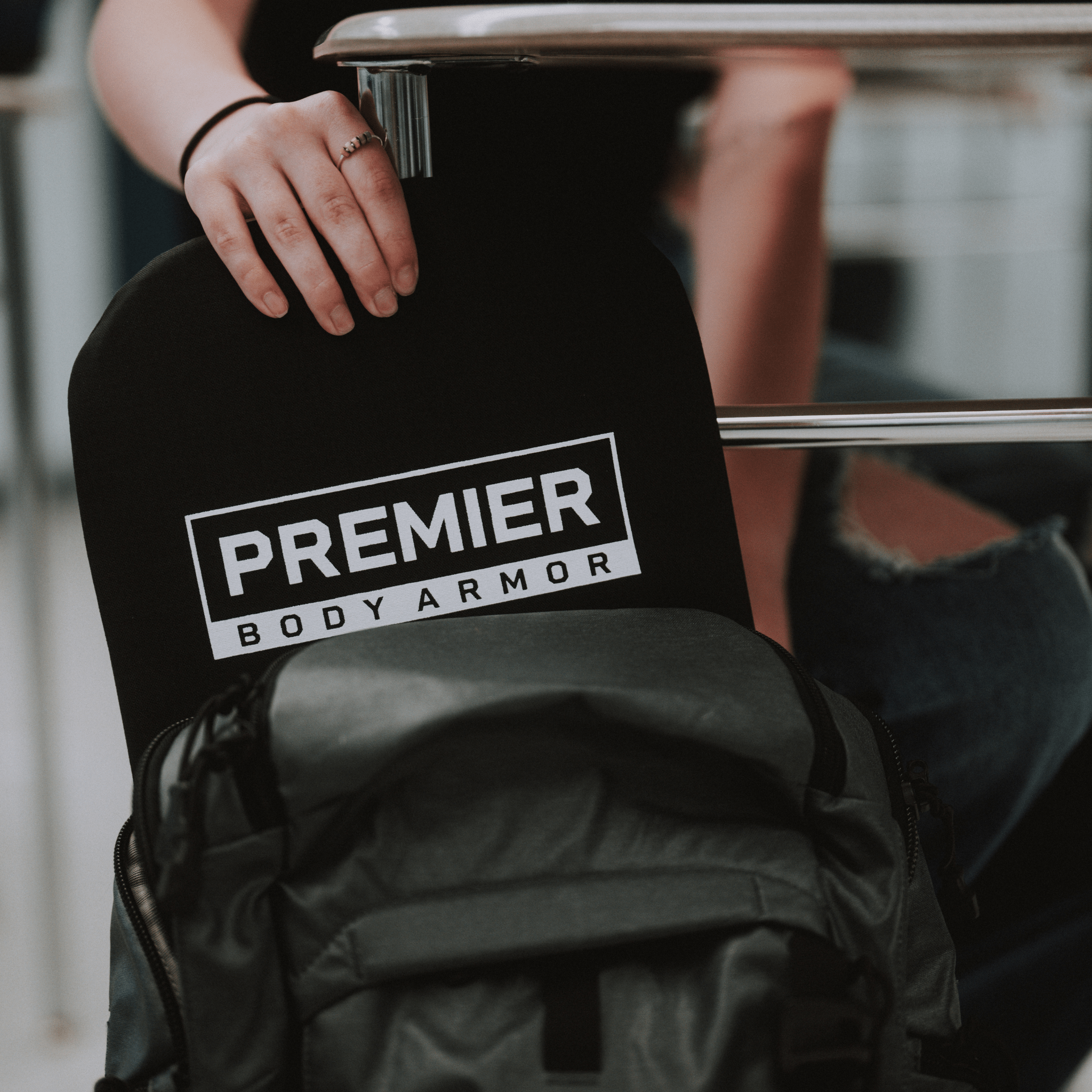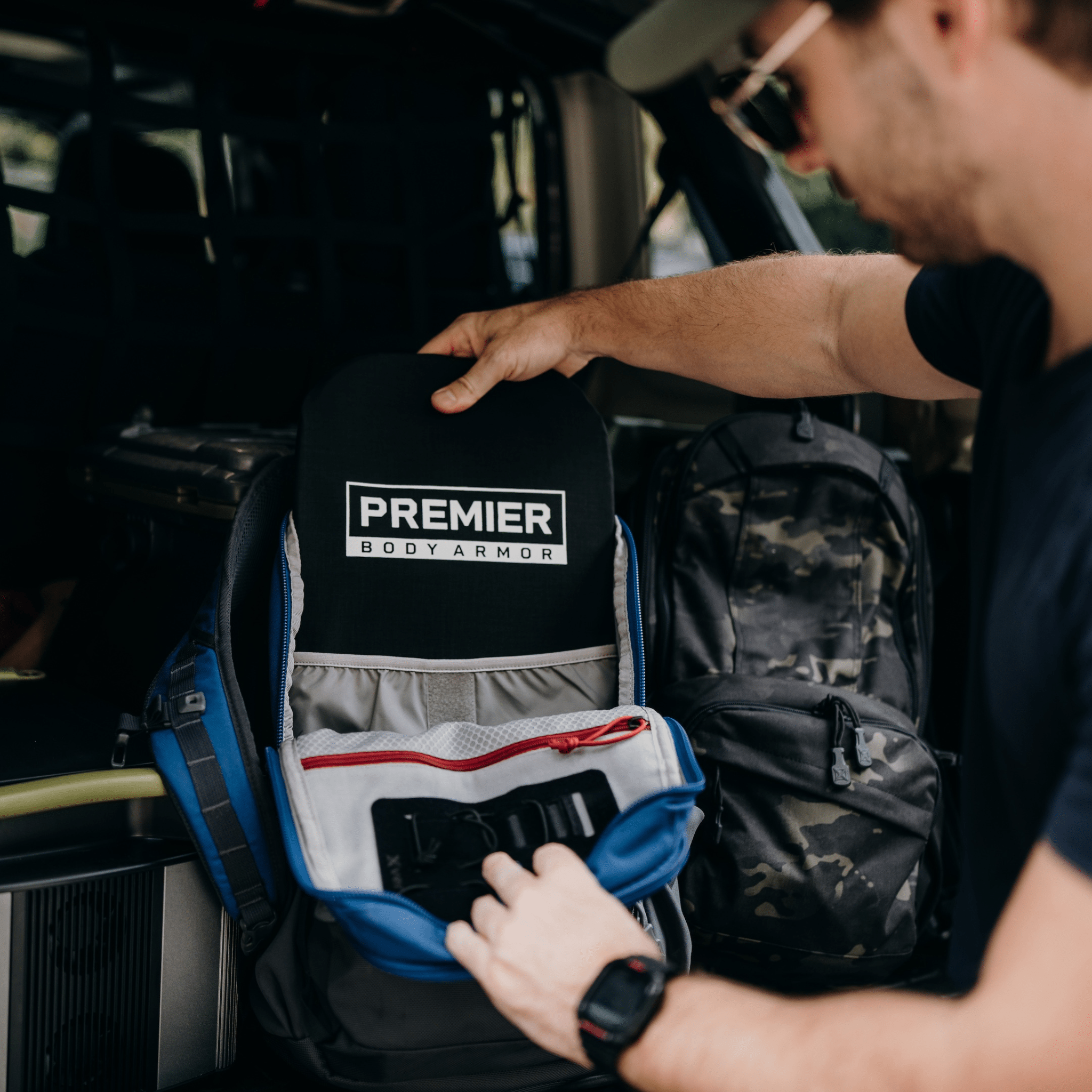A Comprehensive Guide to Ballistic Helmets
Ballistic helmets, also known as tactical helmets or bulletproof helmets, are designed to offer crucial head protection in life-threatening situations. When crafted with state-of-the-art materials and rigorously tested to meet stringent safety standards, these helmets provide adaptability, comfort, and life-saving protection.

In this comprehensive guide, we delve into various aspects of ballistic helmets, including the stringent testing methods overseen by the National Institute of Justice (NIJ). We'll help you differentiate between helmet ratings, understand what types of ballistic helmets are available, and discuss what the U.S. Military uses for head protection.
Additionally, we'll guide you through the process of selecting, setting up, and caring for your helmet, and answer some common questions we get. Let’s get started!
Level IIIA Military Helmets / Level 3A Combat Helmets
A military helmet designed for combat scenarios must pass strict testing measures to certify its effectiveness. The NIJ (National Institute of Justice) is the governing body that sets the standard for ballistic helmet performance.
Guidelines for helmet testing follow the NIJ standards 0106.01 & the 0108.01. NIJ standard 0106.01 details how the helmets should be set up for testing. The more rigorous NIJ standard 0108.01 provides updated classification requirements for all types of body armor, including helmets.
Helmets must withstand various calibers at a certain velocity to fall within certain ratings. Helmets are rated from I-III depending on what size rounds they can stop completely. An NIJ Level IV helmet would theoretically provide protection up against rounds as powerful as .30 caliber armor-piercing bullets. However, there are no true level IV helmets that have been tested according to NIJ standards.
Although there's a common notion that higher levels such as a ballistic helmet NIJ Level IV would offer superior protection, keep in mind that a true bullet proof helmet level 4 helmet would be substantially more expensive and would only offer additional protection from rounds that aren’t common.
Whether or not a level 3 tactical helmet is even safer is up for debate because of the risk of backface deformation. Level IIIA helmets offer an optimal balance of weight and protection, making them the preferred choice for many military/law enforcement organizations.
What is the difference between Level 3 and Level 4 Helmets?
When comparing a level 3 ballistic helmet with a level 4 helmet, the key difference lies in the level of protection they offer. A Level III ballistic helmet is designed to protect against some rifle rounds and offers NIJ Level III protection. On the other hand, a Level 4 ballistic helmet is something to be wary of, as NIJ Level IV protection for helmets does not exist. The same goes for level 3+, as sellers offering a level III+ helmet have not actually been certified by the NIJ.
What Are the Different Types of Ballistic Helmets?
Choosing the right ballistic helmet is a bit confusing given the variety available. The three most common types of helmets are PASGT, MICH/ACH, and FAST helmets. Each design offers unique advantages tailored to different combat and tactical scenarios, and each of these helmets is suitable for a specific type of person. Let’s look at the fundamental differences:
PASGT Helmet
The PASGT (Personnel Armor System for Ground Troops) helmet is a smooth classic design, often seen in old military movies. It offers good coverage and Level 3 protection, but is heavier and offers less adaptability and customization than newer models. This will generally be the cheapest option.
MICH Helmet / ACH Helmet
The MICH (Modular Integrated Communications Helmet) or ACH (Advanced Combat Helmet) is an improvement over the PASGT in terms of weight and utility. It provides Level 3 protection and offers better compatibility with add ons and communication devices.
FAST Helmet
The FAST (Future Assault Shell Technology) helmet produced by Ops-Core is the newest of the three. It has a distinctive high cut, with no ear coverage, and provides the benefits of Level 3 (RF1) protection via polyethylene. This helmet allows for the most customization options, such as mounts for night vision goggles/other accessories.
What Helmets Does the US Military Use?
The bulletproof helmets USA chooses to employ in the military varies a bit and depends on the branch and mission requirements.
US Army Ballistic Helmets
The U.S. Army primarily uses the ACH (Advanced Combat Helmet) which offers Level 3 protection and is an upgrade over the older PASGT helmets. Known for its modular design, the ACH is a standard-issue army helmet that balances weight and protection efficiently.
The ACH is currently being phased out by the Enhanced Combat Helmet (ECH), AKA the “ACH II”. The ECH uses polyethylene rather than ballistic fibers to enhance protection and reduce weight. Both helmets will ultimately be phased out by the Integrated Head Protection System (IHPS), which was introduced in 2019. The IHPS helmet is 5% lighter and less restrictive on hearing, with improved ballistic and blunt force trauma protection.
Navy SEAL Ballistic Helmet
Navy SEALs often opt for FAST helmets, prized for their light weight and adaptability. These helmets are customizable with various accessories, making them well-suited for covert and maritime operations. Two common types are the FAST SF and FAST Maritime. These two helmets are similar, but the FAST SF is slightly lighter and is designed to be comfortable than the Maritime.
For an in-depth look at the military’s use of body armor, read our article on what body armor the military uses.
Are Ballistic Helmets / Tactical Helmets Worth It?
Whether a helmet is a worthwhile investment largely depends on the situations you expect to encounter. On top of being more expensive, helmets are much more cumbersome and less concealable than a bullet proof vest. For this reason, helmets are less common, and are usually only used by military personnel, law enforcement, and security professionals.
Regardless, trauma to the head is almost always more immediately life-threatening than trauma to any other part of the body, including the cardiac box. Trauma to the skull/brain can result in rapid loss of consciousness, severe brain injury, and potentially irreversible neurological damage. For civilians concerned with personal safety, a body armor helmet can easily prove to be invaluable when in a life or death situation.
Blunt force trauma to the head remains a significant concern, even when wearing specialized protective gear like ballistic or tactical helmets. The force of from bullets or blunt force can still be transmitted to the skull and brain, potentially causing concussions, traumatic brain injuries, or even fatal outcomes.
The energy from these impacts, even when dispersed by the helmet, can lead to internal bleeding, brain swelling, or bruising, resulting in long-term or irreversible damage. While helmets will stop a bullet from penetrating the skull, they are not foolproof against all types of head or brain injuries.
A good helmet incorporates multi-layered composite materials and designs that aim to disperse the energy from blunt force impacts more effectively. Some helmets feature multi-directional impact protection systems (MIPS), which allow the helmet to rotate slightly upon impact, thereby reducing rotational forces that can cause brain injuries. Others use specialized foam or gel liners that can absorb and distribute the force of an impact more evenly, minimizing the risk of localized trauma.
Will Ballistic Helmets Stop Bullets?
While ballistic helmets can significantly reduce the risk of penetration, they are not entirely "bulletproof" in the sense that they can stop all types of ammunition. A ballistic helmet level 3 is designed to provide protection against handgun rounds and some rifle rounds. A full tactical helmet may offer additional coverage but adheres to the same protective standards.
Additionally, a ballistic helmet isn't usually tested to stop bullets being fired within inches of the head. Despite not being perfect, wearing a good ballistic helmet is considerably safer than wearing no helmet at all. Furthermore, modern helmet technology is able to provide an impressive level of protection and can save lives in a wide range of scenarios.
What Are Ballistic Helmets Made Of?
Ballistic helmets are typically made from Kevlar®, the same material that is in bulletproof vests. This high-grade composite material forms the core of many modern helmets. Kevlar fibers are woven into multiple layers to create a composite capable of absorbing and dispersing the energy of a ballistic impact.
While Kevlar is a staple in many designs, some helmets also incorporate additional materials like thermoplastics or advanced ceramics to further enhance performance.
How Do I Set Up a Ballistic Helmet?
Getting your helmet properly configured is important not only for comfort, but for safety as well. First, adjust the inner padding snugly so that it fits your head. Make sure there are no pressure points that could cause discomfort during extended wear.
When putting the helmet on, check that the chin strap is properly adjusted. You shouldn’t be able to place more than two fingers between the strap and your chin.
Lastly, look into mounting options for any additional gear you'll be using. Communication devices, night vision goggles, or facial shields can all be mounted to a helmet. Most modern helmets come with pre-drilled holes or mounting systems for such accessories.
How Should I Clean and Store My Ballistic Helmet?
Maintaining your helmet's integrity is as important as its initial setup, if not more.
For cleaning- Mild soap and water works great. You want to avoid harsh chemicals that could degrade the material. We recommend using a soft cloth to remove the dirt without scratching the surface.
For storage- Keep your helmet in a cool, dry area, away from direct sunlight, which can sometimes weaken its structural integrity. Use a helmet bag or a padded box to protect it from accidental drops or bumps.
FAQs
Is there a Level 4 helmet?
No. Level 4 helmets would be designed to withstand .30 caliber rifle rounds. A true lvl 4 helmet would be quite heavy on the head, and the blunt force trauma from a hit with a round of that size and speed would be deadly.
Are ballistic helmets legal?
In most jurisdictions, owning a ballistic helmet is legal for civilians. That being said, It’s typically prohibited for convicted felons to own/wear most body armor, among other exceptions. Visit your local sheriff's office to get a complete overview of your area’s laws regarding ballistic helmets, or read our article on body armor laws.
Are ballistic helmets rifle rated?
Not all ballistic helmets are rifle-rated. Most commercially available options are designed for Level IIIA protection, which is effective against handgun rounds. For rifle rated protection, look for a level 3 helmet.
Can a ballistic helmet be used with other protective gear?
Absolutely! Ballistic helmets are almost always part of a broader personal protective equipment system. We offer a wide range of protective gear, giving you plenty of choices to match your unique safety needs. Want to make an informed decision? Check out our expert guide: "How to Pick the Right Body Armor."
How do I measure for the best ballistic helmet fit?
First, measure the circumference of your head about an inch above your eyebrows. Most helmet manufacturers provide sizing charts to ensure a proper fit. A well-fitted helmet should maximize both comfort and protection.
Does Premier Body Armor Sell Ballistic Helmets?
Yes, Premier Body Armor currently offers the Fortis Ballistic Helmet as well as a helmet bag for secure storage.
Written by Ben Bryner










New team wendy helmet is rifle rated
Everything looks awesome about this helmet! If it’s anything like the quality of the body armor it’s a must.
Leave a comment